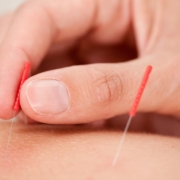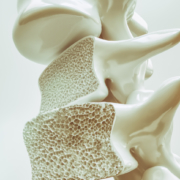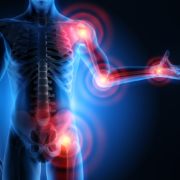Bulging Disc vs. Herniated Disc: What’s the Difference? Can Chiropractic Help?
Discs are the cushioning in your spine that act as shock absorbers and prevent vertebrae from rubbing together. Discs consist of cartilage. The outer layer is tough cartilage, while the interior of discs is softer. Your vertebral discs wear out over time. Injuries can cause a disc to bulge or become herniated. The cartilage can become stiff and dehydrated, giving you less cushion and shrinking the space between your vertebrae. If the space between vertebrae narrows, you might experience pain, stiffness or poor range of motion in the area.
When You Have a Bulging Disc
A bulging disc occurs when the outer layer of your disc becomes compressed, and the disc becomes more flattened. The whole structure doesn’t have to be impacted, but the bulge tends to be fairly even throughout the disc. While damage can occur if you have a bulging disc, decompression strategies to open up the area with chiropractic care can reduce pain and inflammation in the area.
Understanding a Herniated Disc
Herniated discs are different from a bulging disc. When you have a herniated disc, there is damage to the tough outer layer of cartilage and the inner layer is protruding out from the tear. Your doctor might also call a herniated disc a ruptured or slipped disc. It means you have damage to the outer layer of your disc, and you are more likely to experience pain. Herniated discs tend to reach nerve endings more readily than bulging discs, resulting in nerve pain that can be difficult to treat.
Chiropractic Assessments For Disc Problems
Chiropractic care looks at the overall function of your spine to determine what can be done about areas that are out of alignment. You can find pain relief by working with a chiropractor, but it’s important to work with your chiropractor on a consistent basis. Chiropractic treatment begins with a careful assessment of what is going on in your spine to cause pain, stiffness or inflammation. Your chiropractor will want to look at any imaging that has been done on your spine to see what your discs look like. Once problem areas are identified, your chiropractor creates a treatment plan to address these areas.
Treatment for Bulging and Herniated Discs
If you are in pain , chiropractic treatment can ease some pressure on your disc. Decompression strategies such as stretching and traction are used to open up the space between your vertebrae. You will be taught strengthening exercises to keep your spine in alignment. You might find relief after one appointment, but it is important to keep seeking care from your chiropractor when you are trying to get help for a bulging or herniated disc.
Chiropractic care is a safe, holistic way to treat pain, stiffness and swelling. If you have been told that surgery is your only option, it’s time to seek the services of a chiropractor first. You might discover that you can decrease your pain and begin moving about easier again. Some people are able to prolong their need for surgery, while others avoid surgery completely.’
You deserve a healthy spine. We are here to help you get what you deserve. To learn more about our office check out our website here. Call 780-455-2112 to contact our us to learn more about how we can help you with postural issues and other joint issues through chiropractic care. We look forward to hearing from you!










